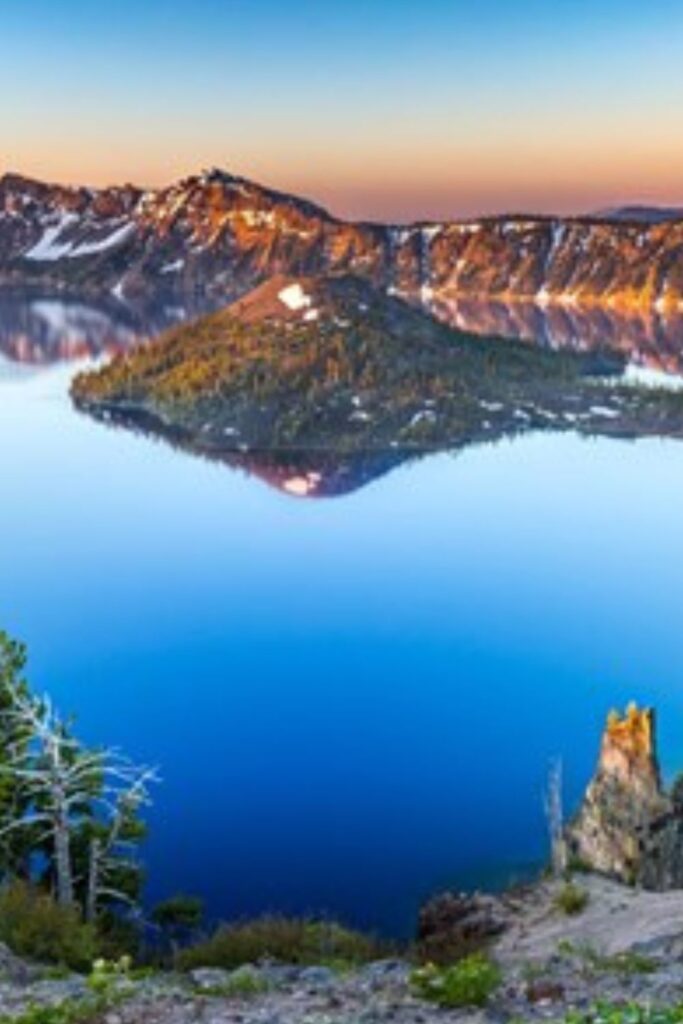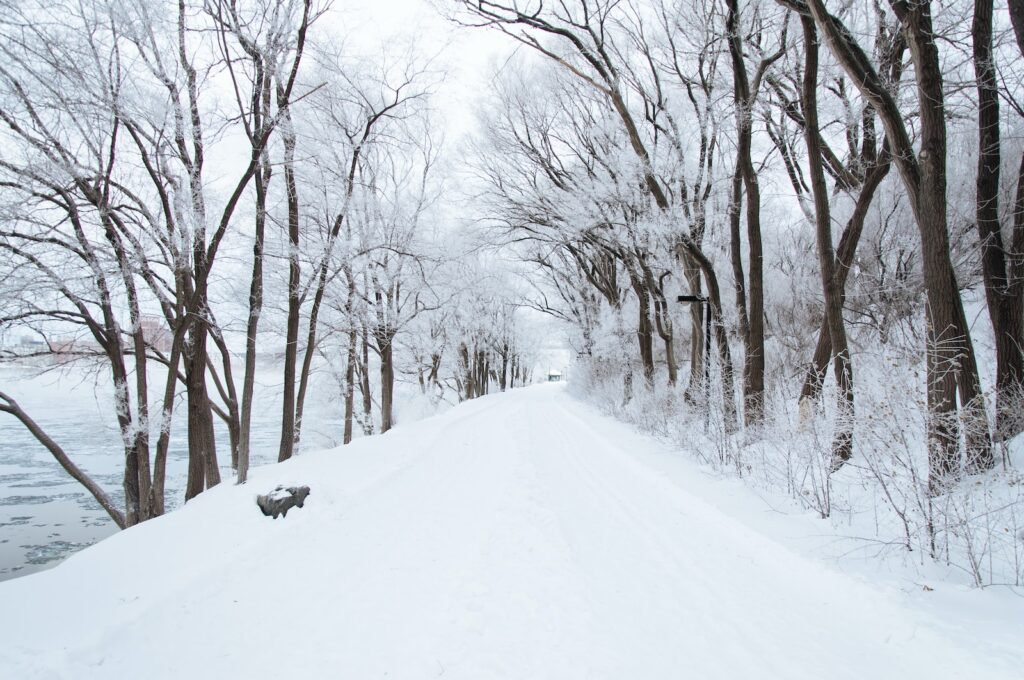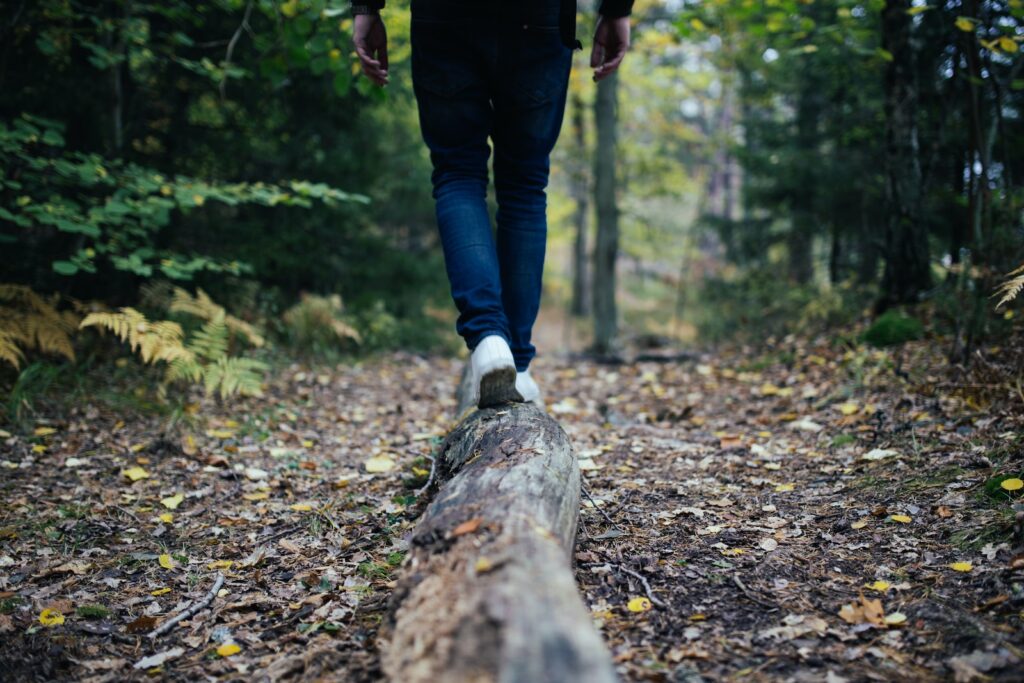
Fun and Exciting Things to Do Crater Lake National Park
We may earn money or products from the companies mentioned in this post.
Oregon’s only national park was formed thousands of years ago when Mount Mazama erupted and collapsed, leaving an expansive caldera. Together, rain and snowmelt filled what is now Crater Lake, making it the deepest – and some say the bluest – lake in the country.

Crater Lake National Park was established in 1902 when President Theodore Roosevelt signed a bill making it the fifth oldest national park in the United States.
Formation
Crater Lake formed after an ancient volcano caved in and erupted about 7,700 years ago, creating a deep hole that filled with 4.6 trillion gallons of water from melted snow and rain. It is the deepest and bluest lake in the world.
Founders
John Wesley Hillman, Henry Klippel, and Isaac Skeeters, on a quest to find gold, first founded Crater Lake on June 12, 1853. They named it Deep Blue Lake.
Management
William Gladstone Steel, known as the “Father of Crater Lake National Park,” learned about Crater Lake in 1870 when he read about it in a newspaper that he wrapped his lunch in. Mr. Steel managed Crater Lake National Park for 49 years.
Geology
A geological survey conducted in 1959 by Captain Clarence Dutton recorded the deepest part of Crater Lake at 1,932 feet.
Landmarks

Notable landmarks include Crater Lake Lodge, Wizard Island, Llao Rock, and Skell Head.
Distinguishing Facts
Rim Drive was finished in 1918. Crater Lake Lodge was ready for visitors in 1915. Crater Lake sees the most visitors in July and August.
Decide When To Go
Most visitors arrive in July and August, but the park is open for the summer season from June through September. Winter conditions are extreme (more than 500 inches of snowfall each year), and most facilities are closed then.
Choose a transportation type. You can fly into Medford, rent a car, and drive Route 62 north to the park. Driving south from Bend on Route 97 and then west on Route 138 will also get you to a park entrance.
Weather

Winter brings an average snowfall of 533 inches. Snow melt generally shows up by the beginning of July. Summer (July through September) usually sees an average temperature of 40 degrees during the daytime, although August can bring temperatures over 80. You must have some sort of waterproof outerwear in the winter months, but you will still need warm clothing during the summer. Plan on packing clothing that can be layered.
Lodging at Crater Lake National Park
There are two campgrounds and two lodges within Crater Lake National Park. Historic Crater Lake Lodge, first opened in 1915, overlooks the lake for a spectacular view. Mazama Village Motor Inn offers rustic cabin lodging; it is located just seven miles from the Crater Lake rim, amid Ponderosa Pines. Mazama Campgrounds offer 200 camping sites. They have running water, flush toilets, fire rings, and picnic tables. Lost Creek Campgrounds has 16 tent sites and is a bit more rustic than Mazama Campgrounds.
Dining
Crater Lake Lodge has seating for 75 in their dining room. They are open for all three daily meals, serving Northwest fine-dining cuisine. Annie Creek Restaurant, located in Mazama Village, has room for 60 guests at a time. Open for breakfast, lunch, and dinner, they serve casual dining with pizza, burgers, pasta, and sandwiches. Rim Village Caf , located just one block north of the lake, offers sit-down or grab-and-go sandwiches, soups, salads, and snacks.
Activities
If you love the outdoors, Crater Lake National Park could not be a better location for a family vacation. There are scenic tours and a driving route around the rim. Boat tours are also available. There is winter snowshoeing and cross-country skiing with nine alternate skiing trails. Choose from any of the 90 miles of trails for hiking. You can fish for rainbow trout or salmon in the lake. If you are in shape, try bicycling around the Crater Lake Rim–it is 33 miles. If you are a scuba diver, the lake will be a new adventure, but remember to get your permit as soon as you arrive.
Stop in at the Steel Information Center at park headquarters to see “The Crater Lake Story,” a video shown every half-hour in summer. This will give you a good overview of park features and history. Then pick up maps and trail guides.
Drive the 33-mile Rim Drive, which will give you spectacular views of Crater Lake from a series of overlooks. The best time to drive Rim Road is July through September when all parts of the road are likely to be open.

Go for a hike. There are more than 50 miles of trails Crater Lake National Park, including 33 miles of the Pacific Crest Trail. Moderate hikes of 2 miles or less include the Annie Creek Canyon Trail, the Garfield Peak Trail, and the Godfrey Glen Trail.
Consider other outdoor activities. Bicycles are allowed in the park on paved roads. You can also go swimming in the lake, but be aware that the water is very cold and the air temperature can be, too.
Arrange a boat tour. Ranger-guided tours on the lake are offered July through mid-September by the Crater Lake Lodge Company. Buy tickets at the parking lot near the Cleetwood Cove trailhead.
Participate in evening campfire programs. These are especially informative about the natural and cultural history of the lake. Check the schedule in summer for the Mazama Campground Amphitheater, where many programs are held.
Enjoy other activities at the lake, such as fishing, river rafting, float trips, and wildlife watching. In winter, skiing and snowshoeing are popular.
Wildlife
The salmon and rainbow trout are not native fish to the area. They were introduced to Crater Lake during the late 1800s and early 1900s. You may spend your whole vacation at the park and never see living creatures other than people and their pets, but there are bears, martins, squirrels, and deer in the area. It is strictly prohibited to feed wild animals. There are many species of birds, including balk eagles and spotted owls.
Tips & Warnings
Snow may stay on the ground well into summer, leaving some park roads closed as late as June.
To contact the park directly, write to Crater Lake National Park, P.O. Box 7, Crater Lake, OR 97604, or call (541) 594-2211, Ext. 402.
Permits are required for backcountry camping. These are free and may be picked up at any visitor's center. Backcountry hiking is strenuous, so be sure you're in good enough shape to tackle the trails before setting out.
Pets must be on a leash at all times and are not allowed on any park trails.
Be aware of rules for wildlife watching, and never feed wild animals in the park.
Collecting or taking any natural or cultural objects from within the park is prohibited.